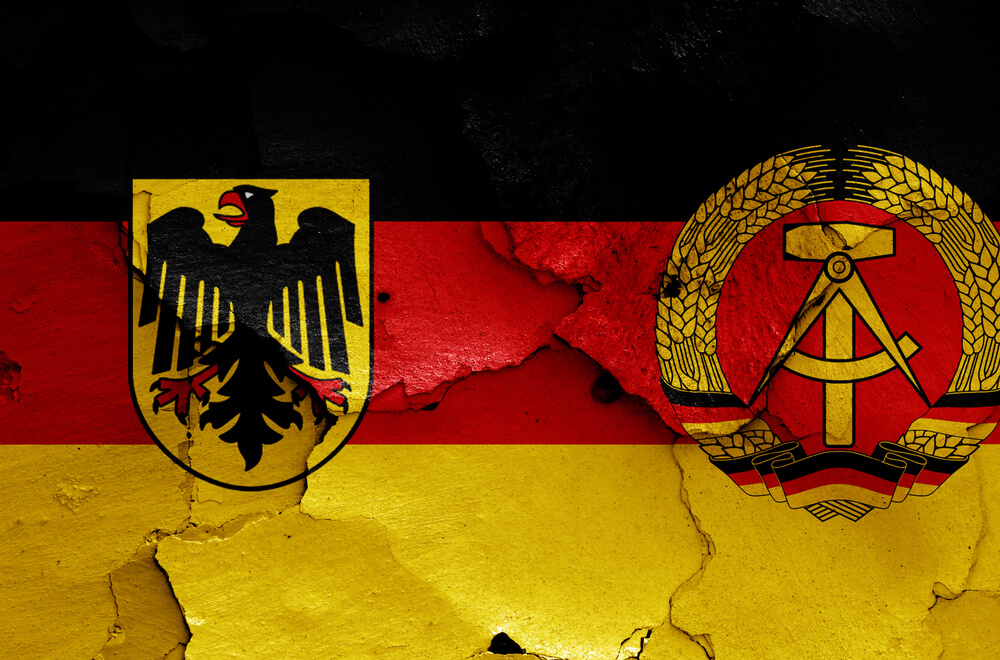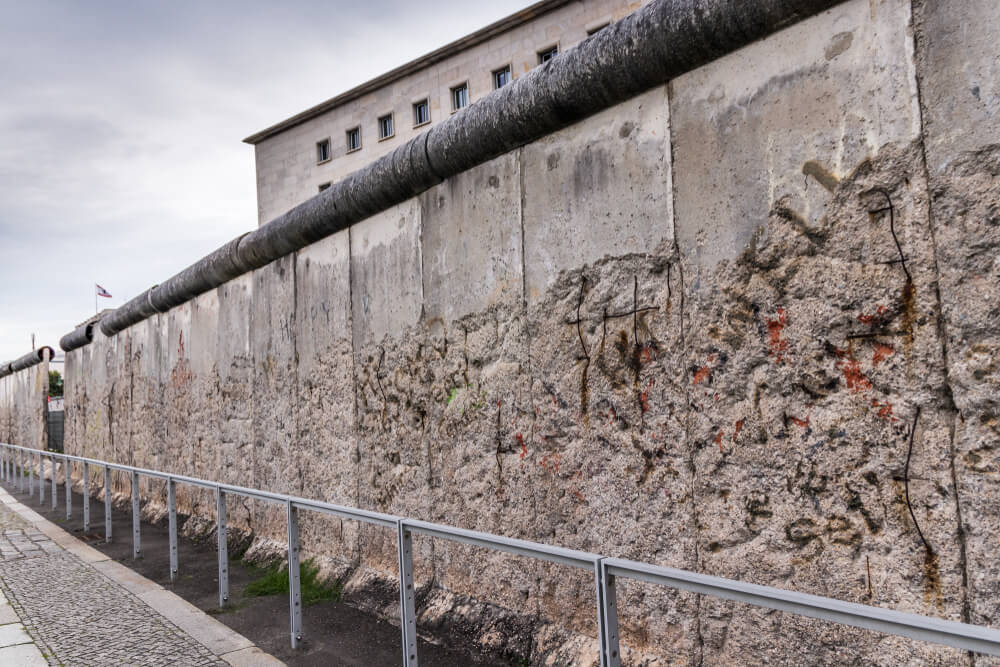Berlin Wall, everything you need to know from its construction to its fall

Why was the Berlin Wall built, how long did it last and when was it destroyed? Find out all this and more in the rest of this dedicated article.
Why was the Berlin Wall built?
It would be impossible to understand the history of the Berlin Wall without first understanding the geopolitical context of the time. To do this, we have to go back to the Second World War. In 1945, the German army was defeated by the Allied forces, which included the United States, France and Great Britain. Following this victory, the victors divided the country into four zones. The capital, Berlin, was also divided into two zones:
- West Berlin, which belonged to the Federal Republic of Germany (FRG). It was administered by the United States, Great Britain and France.
- East Berlin, on the other hand, belonged to the German Democratic Republic (GDR) and was run by the communist Soviets.
From then on, the lives of Berliners were divided into two parts, with no distinction made between families, human considerations or even professions of any kind. Only soldiers from both sides were allowed to travel between the two states.
In West Germany, the situation was fairly favourable. Economic growth and modernisation were underway. A capitalist system based on the Marshall Plan was established in this part of the country. In East Germany, the situation was far more catastrophic. The standard of living and conditions imposed by the communist system prevented any social and economic development.
A natural consequence of this situation was that East Germans tried every means possible to flee to the West. In all, no fewer than 3 million Germans left the GDR during this period. Despite massive checkpoints, the situation was becoming unmanageable for the Soviets. So in order to stop these migratory flows, the Soviets took a radical decision: to build a huge wall. Construction began in the heart of Berlin on the night of 12 to 13 August 1961, in complete secrecy. All means of transport were halted and 14,500 East German soldiers blocked the streets and railway lines. The next day, barbed wire and barriers made it impossible to cross the border. The building facades on the line drawn by the Soviets were walled up and incorporated into the immense wall that now separated the two Germanys.
The Berlin Wall was born; a “wall of shame” for West Germans, it was in fact an “anti-fascist protective wall” for East Germans. Designed to be impassable, it stretched for 111.9 kilometres and was 4.2 metres high. Its length inside Berlin alone was 43.1 kilometres.
Protests and outrage over the construction of the Berlin Wall
West Germany’s reaction to the construction of the Wall was not immediate. It mainly called on the population to remain calm. It was not until 16 August that the very first demonstration in front of the Wall took place. On that day, no less than 300,000 people gathered around Berlin mayor Willy Brandt to demonstrate. It was the first in a long series of protests lasting almost 30 years.
In fact, in order to avoid a war, the Allied Forces never took any real initiative against the Wall. The only altercation occurred on 27 October 1961, when GDR border guards tried to prevent the free movement of Western allied forces on their territory. Berlin lived under tension for more than 36 hours, with ten American and ten Soviet tanks facing each other on either side of the Wall. Fortunately, it was this situation, which could have turned tragic, that led to the longest period of peace in Europe for many years.
When did the Berlin Wall come down?
The Berlin Wall was destroyed on 9 November 1989, 28 years after it was built. It had been an extremely long struggle for East Germans, who had been demonstrating for many years for freedom of movement to the West. It was a historic day, marking the beginning of German reunification and the end of the Communist era.
In front of the world’s cameras, Berliners armed themselves to demolish the Wall of Shame. One of the greatest symbols of the Cold War fell, highlighting the bitter failure of the Eastern bloc and the Communist regime.
Today, there are many photographic and video archives documenting the many scenes of fraternity between East and West Berliners. This day was nicknamed the Pacific Revolution or die friedliche Revolution. A new era dawned for Germany and a breathtaking economic upswing began across the country.
Today, the Berlin Wall remains in the minds of all Germans as a bad memory and an example never to be repeated.
In conclusion:
A symbol of a bygone era, the Berlin Wall left its mark on an entire section of German history. If you had any questions about it, this guide should have answered most of them. Don’t forget that the Berlin Wall Memorial (Gedenkstätte Berliner Mauer) can now be visited in the German capital. Don’t hesitate to visit it next time you’re in Berlin.
200 audioguided tours for cities all around the world
Download


